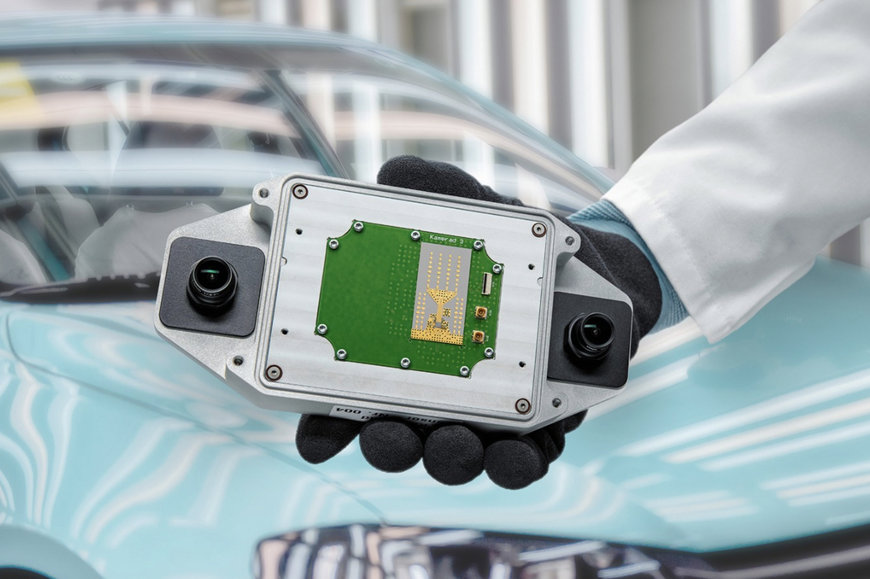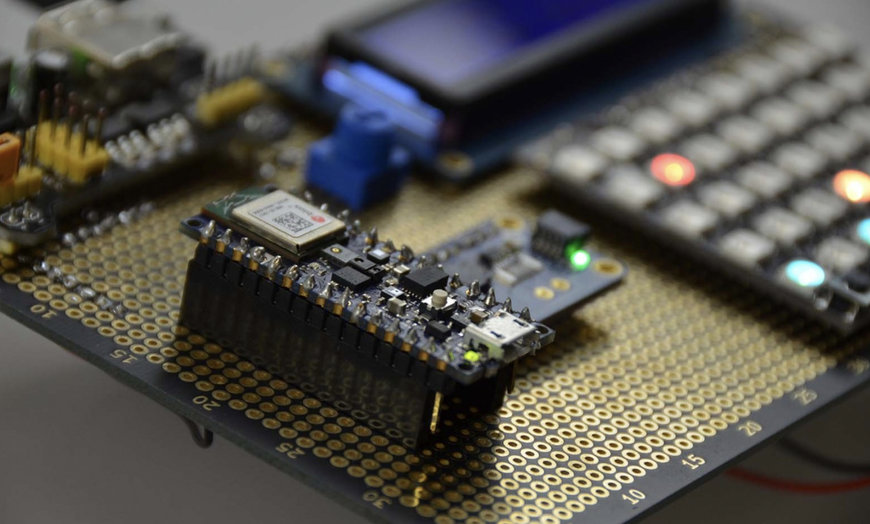www.automation-mag.com
15
'23
Written on Modified on
Fraunhofer News
FRAUNHOFER EMBEDDED SYSTEMS: LOOKING AHEAD TO THE FUTURE WITH AI AND SUSTAINABILITY
Fraunhofer IZM’s plug-and-play sensor platforms enable rapid testing and validation of concept ideas for wireless sensor and radar sensor systems.

From vehicles to industrial plants to household appliances, embedded systems are an integral part of numerous aspects of daily life and are taking over important control, regulation and information-processing tasks. They feature everywhere from components and modules, operating systems, and hardware and software design to machine-to-machine (M2M) communication, services and complex system designs. In order to achieve optimal performance in different environments and applications, embedded systems must be both compact and intelligent and, in particular, save resources. At embedded world 2023, scientists from the Fraunhofer-Gesellschaft will demonstrate developments ranging from neuromorphic chips to energy self-sufficient sensors.
Edge AI: artificial intelligence for electronic systems
Intelligent, self-learning, embedded systems are playing an increasingly important role for companies in making their products smarter, whether it concerns wearables in sport, smart speakers, digital solutions in retail or condition monitoring for industrial machines. The Fraunhofer Institute for Integrated Circuits IIS offers users of its embeddif.[ai] technology an opportunity to rapidly develop AI solutions for embedded systems. This enables AI applications to be operated independently of a cloud server, thus making them energy-efficient and safeguarding data sovereignty. These benefits allow companies to use artificial intelligence for various applications in the smallest of spaces.
Edge AI can also be used in applications via neuromorphic hardware architectures. For example, experts at Fraunhofer IIS are developing new chip platforms inspired by the human brain. One example is spiking neural networks (SNNs), which process information in the form of pulses in an energy-efficient way. Visitors to the embedded world exhibition will be able to see these mechanisms in action in a live 3D demo.
The Fraunhofer Institute for Microelectronic Circuits and Systems IMS will showcase its AIfES solution, a platform-independent and constantly growing machine learning library developed in the programming language C. AIfES runs on almost any hardware, from 8-bit microcontrollers to smartphones and PCs. Using the AIRISC family of embedded RISC-V processors, Fraunhofer IMS offers secure and efficient hardware for sensor applications and embedded AI to implement customer-specific extensions in a short time, thus providing optimal performance for special applications.
In addition, Fraunhofer IMS will present its LiDAR photodetector. This intelligent “light collector” registers individual photon events in order to develop comprehensive distance sensors. Using the example of a flying experimental platform — the Albacopter — the scientists will demonstrate a possible application of this detector in urban mobility scenarios.

Sustainable systems: sustainability and energy efficiency of embedded systems
When it comes to embedded systems, sustainability is a relevant topic both in terms of development and use. In addition to optimizing energy-intensive manufacturing processes, sustainability considerations, such as the updateability of the software used or the question of whether a system can be repaired or must be completely replaced, are important with a view to conserving resources.
At embedded world, researchers from the Engineering of Adaptive Systems EAS institute branch of Fraunhofer IIS will present a method for early damage detection using thermal spectroscopy. By measuring transient thermal resistance, damage in the housing of an integrated circuit or of discrete electronic components can be detected before a functional failure occurs. This allows the component to be repaired or replaced at an early stage.
In the field of energy harvesting, Fraunhofer IIS is developing and investigating technologies and systems for using energy from the environment to provide small electronic consumption devices with energy self-sufficiency. Scientists can “harvest” sufficient energy from vibrations from machines, devices or structures, as well as from temperature differences between pipes, lines or valves and the environment, for many internet-of-things (IoT) sensors to operate sensors or significantly extend the service life of any batteries used.
RFicient technology developed by Fraunhofer IIS makes long response times of conventional wake-up receivers a thing of the past. Numerous time-critical applications, as well as IoT services that either run simultaneously or require requests to be sent to multiple nodes first, such as applications for airports or train stations, will benefit from a response time of 30 milliseconds, i.e., the time required to respond to a signal with an action. A rapid response and low consumption by the chip are not mutually exclusive and allow, in fact, savings of up to 99% in the power consumption of a continuously operating system.
Increasing miniaturization of distributed electronic systems is posing ever more challenges in terms of achieving an adequate energy supply. In the context of green ICT — i.e., electronics for energy-saving information and communication technology — the Fraunhofer Institute for Reliability and Microintegration IZM deals with topics ranging from system characterization and energy-efficient hardware design to energy-optimized firmware design. The Fraunhofer IZM team models and parameterizes the entire energy conversion chain, from the source to suitable processing and intermediate storage to variable loads.
Sensor and system design: development of microchips and sensors
One of the fundamental aspects of the embedded industry is the needs-based and innovative development of integrated circuits and sensors. The Fraunhofer Institute for Organic Electronics, Electron Beam and Plasma Technology FEP will present its innovative IC and backplane design for new, application-specific microdisplays and sensors. Visitors will be able to see for themselves the practical application of various OLED microdisplays, for example in thermal imaging and augmented reality applications. A reliable augmented reality (AR) system for industrial applications, for example in electronics and aircraft construction, which can be used in safety helmets, demonstrates the high level of brightness and low power consumption of the OLED microdisplays used. Furthermore, a new evaluation test board, which has 64 microdisplay chips installed, will be presented to customers. Compared to individual evaluation kits, it is intended to support new development ideas and their rapid implementation in start-ups, small and medium-sized enterprises or even large companies.
In terms of sensor and system design, Fraunhofer IIS will present tailored solutions for the ever-changing requirements of industrial applications. The focus will be on the development of mixed-signal ASICs (application-specific integrated circuits), intelligent integrated sensor systems and design solutions to support increasingly complex electronic systems.
To facilitate the agile development of software, deep SiL (software in the loop) testing of embedded systems is required. Researchers in the Engineering of Adaptive Systems EAS institute branch offer virtual hardware models that can be used to carry out a deep software test without hardware, whereby the system’s robustness can be increased from the outset.
Fraunhofer IZM will present two plug-and-play sensor platforms that make it possible to quickly test and validate concept ideas for wireless sensor and radar sensor systems. The researchers will demonstrate a universal radar platform for 24, 60 and 79 GHz applications that ensures the efficient implementation of radar projects. The platform enables the development of applications with ranges from 0.1 to 260 meters and angular resolutions of less than 10°. The sensor-actuator platform “Swarmy” uses modular sensor structures to obtain a variety of common measured variables, with data collection, evaluation and display capabilities. This platform is designed for the industrial environment.
www.fraunhofer.com

